a chronicle of events, literature, and politics
1950. India declares itself a republic; UK and USA attack Korea; first credit cards; first organ transplant; Billy Wilder, Sunset Boulevard; Nobel prize – Bertrand Russell (UK)
1951. Festival of Britain; first colour TV; Conservatives defeat Labour in UK general election; Churchill becomes prime minister; UK troops seize Suez Canal zone; Benjamin Britten Billy Budd; Samuel Beckett, Malloy; Nobel prize – P. Lagerkvist (S)
1952. Death of George V. Accession of Queen Elizabeth II at 25;
Ralph Ellison, Invisible Man; Nobel prize – F. Mauriac (Fr)
1953. DNA discovered; conquest of Everest; Death of Stalin – and Prokofiev on same day; Nobel prize – Winston Churchill (UK)
1954. British troops withdrawn from Egypt; Four-minute mile broken; Nobel prize – E. Hemingway (USA)
1955. European Union created; Warsaw Pact founded; V. Nabokov, Lolita; Patrick White, The Tree of Man; Nobel prize – H. Laxness (Ic)
1956. Khruschchev denounces Stalin at Communist Party Conference; Anglo-French invasion of Suez, followed by withdrawal; Hungarian uprising crushed by Soviets; Samuel Beckett, Malone Dies; Nobel prize – J. Ramon Jiminez (Sp)
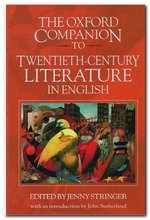 Oxford Companion to Twentieth Century Literature in English is a new reference guide to English-language writers and writing throughout the present century, in all major genres and from all around the world – from Joseph Conrad to Will Self, Virginia Woolf to David Mamet, Ezra Pound to Peter Carey, James Joyce to Amy Tan. Includes entries on literary movements, periodicals, and over 400 individual works, as well as articles on some 2,400 authors, plus a good introduction by John Sutherland.
Oxford Companion to Twentieth Century Literature in English is a new reference guide to English-language writers and writing throughout the present century, in all major genres and from all around the world – from Joseph Conrad to Will Self, Virginia Woolf to David Mamet, Ezra Pound to Peter Carey, James Joyce to Amy Tan. Includes entries on literary movements, periodicals, and over 400 individual works, as well as articles on some 2,400 authors, plus a good introduction by John Sutherland.
1957. European Economic Community established; Homosexuality decriminalised in UK; Patrick White, Voss; Nobel prize – A. Camus (Fr)
1958. Orson Wells, Touch of Evil; Nobel prize – B. Pasternak (USSR) [forced to refuse it]
1959. Castro overthrows Batista regime in Cuba; first motorway opened in UK; Nobel prize – S. Quasimodo (I)
1960. Sharpville massacres in S Africa; new republics declared in Africa; Lady Chatterley’s Lover cleared of charges of obscenity in UK; J.F. Kennedy elected US president; Alfred Hitchcock, Psycho; Nobel prize – A. St. Leger (Fr)
1961. Adolf Eichman on trial for role in Holocaust; USSR makes first manned space flight; USA-backed Bay of Pigs attack in Cuba fails; Berlin Wall erected; Patrick White, Riders in the Chariot; Samuel Beckett, Happy Days; Nobel prize – L. Andric (Y)
1962. US sends troops to Vietnam; Cuban missile crisis; Nelson Mandela jailed; Please Please Me first Beatles hit; Nobel prize – J. Steinbeck (USA)
1963. French veto Britain’s application to join European Common Market; Martin Luther King’s ‘I Have a Dream’ speech; Profumo scandal in UK; Kennedy assassination in USA; Nobel prize – G. Seferis (Gr)
1964. Khruschchev deposed by Breshnev in USSR; Vietnam attacks US destroyer in Gulf of Tonkin; Labour party gains power in UK under Harold Wilson; Saul Bellow, Herzog. Nobel prize – J-P. Sartre (Fr) [prize not accepted]
1965. Malcolm X assassinated; India invades Pakistan; US air raids in Vietnam; anti-war protests in US and Europe; Harold Pinter, The Homecoming; Nobel prize – M. Sholokov (USSR) [authorship subsequently disputed]
1966. Black Panthers established in US; Cultural revolution under Mao in China; Britain wins Wold Cup in football; Nobel prize – Samuel Agnon, Nelly Sachs (Il)
1967. Israel seizes land in 6 day war; first heart transplant; first colour TV transmissions in UK; Stalin’s daughter defects to west; ‘Summer of Love’ hippy demonstrations in San Francisco; decriminalisation of homosexuality in UK; Gabriel Garcia Marquez, One Hundred Years of Solitude; Nobel prize – Miguel Angel Asturias (Gu)
1968. Martin Luther King assassinated; student protests in Paris; USSR invades Czechoslovakia; theatre censorship abolished in UK after 23 years; Tet offensive in Vietnam; Nobel prize – Yasunari Kawabata (Jp)
1969. UK troops sent into N Ireland; US puts first men on the moon; death penalty abolished in UK; precursor of the Internet, ARPANET created; Woodstock music festival; Monty Python’s Flying Circus first broadcast; Nobel prize – Samuel Beckett (Ire)
1970. My Lai massacre; Rubber bullets used in N Ireland; Allende elected socialist president in Chile; anti-government demonstrations in Poland; age of majority lowered to 18 in UK; invention of computer floppy disks; Germaine Greer, The Female Eunuch; Patrick White, The Vivesector; Nobel prize – Alexander Solzhenitsyn (USSR)
1971. Open University begins in UK; internment without trial in N Ireland; China joins UN; Nixon resumes bombing of Vietnam; video recorders introduced; Britain negotiates entry into EU; Nobel prize – Pablo Neruda (Ch)
1972. Miners strike in UK; Bloody Sunday in N Ireland; Watergate scandal begins in US; Nobel prize – Heinrich Böll (Gr)
1973. Allende government overthrown by Pinochet in Chile; industrial strikes in UK; Arab-Israeli war; abortion legalised in US; US pulls out of Vietnam; Britain enters the European Common Market; Nobel prize – Patrick White (Aus)
1974. Miners strike in UK; Impeachment and resignation of president Nixon in US; Nadine Gordimer, The Conservationist; Nobel prize – Eyvind Johnson, Harry Martinson (Sw)
1975. Margaret Thatcher elected leader of Tories in UK; Vietnam war ends with hasty retreat of US troops; first elections in Portugal for 50 years; Microsoft founded; Nobel prize – Eugenio Montale (It)
1976. Jeremy Thorpe resigns as UK liberal leader following sex scandal; Britain found guilty of torture in N Ireland; Jimmy Carter elected president in US; Patrick White, A Fringe of Leaves; Nobel prize – Saul Bellow (USA)
1977. First democratic elections in Spain since 1936; student activist Steve Biko tortured to death in S Africa; Punk rock fashionable; Nobel prize – Vicente Aleixandre (Sp)
1978. World’s first test tube baby; Nobel prize – Isaac Bashevis Singer (USA)
1979. Shah leaves Iran; Ayatollah Khomeni returns from exile in Paris; Islamic republic declared; Margaret Thatcher elected first woman PM in UK; first heart transplant; Pol Pot convicted of murdering 3 million in Cambodia; Francis Ford Coppola, Apocalypse Now; Nobel prize – Odysseus Elytis (Gk)
 Twentieth-century Britain is an account of political, industrial, commercial, and cultural development in England, Wales, Ireland, and Scotland. It’s particularly strong on the changing face of government, and it also relates issues of the day to the great writers and artists of the period. This ‘very short introduction’ series offers a potted account of the subject in handy pocket-book format, with plenty of suggestions for further reading.
Twentieth-century Britain is an account of political, industrial, commercial, and cultural development in England, Wales, Ireland, and Scotland. It’s particularly strong on the changing face of government, and it also relates issues of the day to the great writers and artists of the period. This ‘very short introduction’ series offers a potted account of the subject in handy pocket-book format, with plenty of suggestions for further reading.
1980. USSR Nobel peace prizewinner Sakharov sent into internal exile; Mugabe’s establishes one-party ZANU(PF) state in Zimbabwe; outbreak of Iran-Iraq war; Solidarity trade union recognised by Polish government; Ronald Regan elected US president; John Lennon shot in New York; Nobel prize – Czeslaw Milosz (Po)
1981. Greece joins EEC; Social Democrats launched in UK – merges with Liberals; Peter Sutcliffe convicted of Yorkshire Ripper murders; Prince Charles marries Lady Diana Spencer; first reports of AIDS; Salman Rushdie, Midnight’s Children; Nobel prize – Elias Canetti (UK!)
1982. Argentina invades Malvinas (Falklands); UK re-takes islands; General Galtieri resigns; Polish government abolishes Solidarity; death of Breshnev; Nobel prize – Gabriel García Márquez (Co)
1983. Demonstrations in 20 Polish cities; IRA prisoners escape from Maze prison; US-backed invasion of Grenada; Cruise missiles installed in UK; Nobel prize – William Golding (UK)
1984. UK miners strike against pit closures; USSR boycotts Olympics in LA; Mrs Gandhi assassinated; Nobel prize – Jaroslav Seifert (Cz)
1985. USSR reforms of Glasnost and Perestroika called for by Gorbachev; Greenpeace ship sunk by French agents in NZ; Nobel prize – Claude Simon (Fr)
1986. Westland scandal in UK government; press disputes lead to move from Fleet Street to Wapping in UK; legal independence for Australia; US bomb Benghazi and Tripoli; Chernobyl nuclear disaster; 180-day detention without trial in S Africa; US and Commonwealth impose sanctions on South Africa; Nobel prize – Wole Soyinka (Ni)
1987. Gorbachev begins critique of Breshnev in USSR; white-only elections in S Africa; Gestapo chief Klaus Barbie guilty of crimes against humanity; Iran attacks US tanker in Persian Gulf; DNA first used to convict criminals; Nobel prize – Joseph Brodsky (USA)
1988. IRA members shot by UK in Gibraltar; first Gulf war begins; Gorbachev proposes democratic reforms in USSR; George Bush Snr president in US; Nobel prize – Naguib Mahfouz (Eg)
1989. Khomeini issues fatwa on Salman Rushdie’s Satanic Verses; Tiananamen Square massacre; elections, protests, and shakeups in Communist block; E Germany closes borders after demonstrations for reform; Iron Curtain begins to be removed; Romanian leader Ceausescu executed; playwright Vaclav Havel becomes Czech president; Tim Berners-Lee invents the World Wide Web; Nobel prize – Camilo José Cela (Sp)
1990. Lech Walesa becomes first president of Poland; Nelson Mandela freed after 27 years in jail; John Major replaces Margaret Thatcher as UK prime minister; Derek Walcott, Omeros; Nobel prize – Octavio Paz (Mx)
1991. Collapse of the Soviet Union; Apartheid laws repealed in S Africa; Iraq invades Kuwait; first Gulf war begins with Operation desert Storm; Satellite-based communications become established for TV and Internet; Nobel prize – Nadine Gordimer (SA)
1992. Official end of Cold War; Nobel prize – Derek Walcott (SL)
1993. Bosnian civil war; Use of the Internet grows exponentially; Nobel prize – Toni Morrison (USA)
1994. Channel tunnel opens in UK; Mandela elected president of S Africa; Rawandan genocide; Nobel prize – Kenzaburo Oe (Jp)
1995. Nobel prize – Seamus Heaney (Ire)
1996. Prince Charles divorces Princess Diana in UK; Mad cow disease hits UK; Nobel prize – Wislawa Szymborska (Po)
1997. Hong Kong returns to China; Princess Diana dies in car crash in Paris; Tony Blair wins landslide victory in UK with New Labour Party; Nobel prize – Dario Fo (It)
1998. India and Pakistan test nuclear weapons; US President Clinton in sex scandal; use of mobile phones and Internet becomes commonplace; digital technology widely introduced into broadcast media; Nobel prize – José Saramago (Pt)
1999. New Euro currency introduced; NATO forces in Serbia; hereditary peers abolished in UK House of Lords; Nobel prize – Gunter Grass (Gr)
2000. First elected Mayor of London in UK; Legal age for consensual gay sex reduced to 16;Nobel prize – Gao Xingjian (Fr)
2001. Labour Party re-elected with huge majority; Twin Towers attacked and destroyed in New York; Britain joins US in Afghanistan war; Nobel prize – V.S. Naipaul (UK)
2002. Nobel prize – Imre Kertész (Hu)
2003. Nobel prize – J.M.Coetzee (SA)
2004. Nobel prize – Elfriede Jelinek (Au)
2005. Nobel prize – Harold Pinter (UK)
2006. Nobel prize – Orhan Pamuk (Tk)
2007. Nobel prize – Doris Lessing (UK)
2008. Nobel prize – J.M.G Le Clezio (Fr)
2009. Nobel prize – Herta Mueller (Gr)
2010. Nobel Prize – Mario Vargas Llosa (Pe)
2011. Nobel Prize – Thomas Transtroemer (Sw)
2012. Nobel Prize – Mo Yan (Cn)
2013. Nobel Prize – Alice Munro (Ca)
2014. Nobel Prize – Patrick Modiano (Fr)
2015. Nobel Prize – Svetlana Alexievich (By)
2016. Nobel Prize – Bob Dylan (USA)
2017. Nobel Prize – Kasuo Ishiguro (UK)
2018. Nobel Prize – not awarded
© Roy Johnson 2009
More on How-To
More on literary studies
More on writing skills
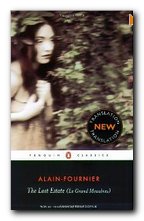 Le Grand Meaulnes
Le Grand Meaulnes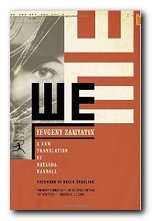 We
We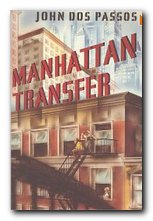 Manhattan Transfer
Manhattan Transfer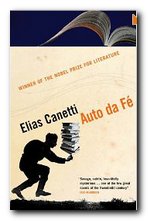 Auto da Fe
Auto da Fe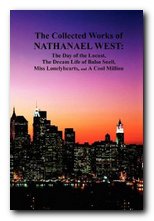 Miss Lonelyhearts
Miss Lonelyhearts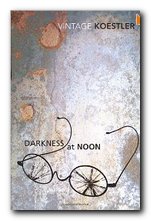 Darkness at Noon
Darkness at Noon The Master and Margarita
The Master and Margarita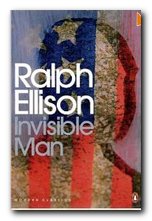 Invisible Man
Invisible Man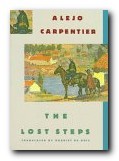 The Lost Steps
The Lost Steps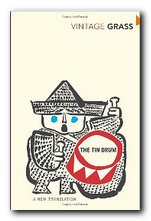 The Tin Drum
The Tin Drum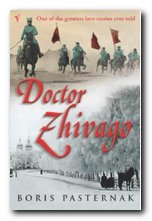 Dr Zhivago
Dr Zhivago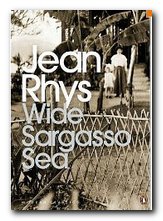 Wide Sargasso Sea
Wide Sargasso Sea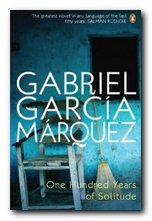 One Hundred Years of Solitude
One Hundred Years of Solitude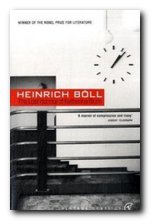 The Lost Honour of Katharina Blum
The Lost Honour of Katharina Blum The Golden Gate
The Golden Gate The Conservationist
The Conservationist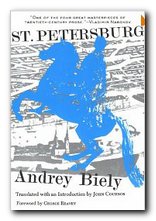
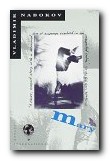 Mary
Mary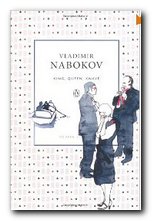 Other novels such as
Other novels such as 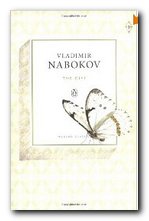
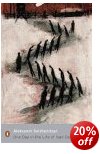 One Day in the Life of Ivan Denisovitch
One Day in the Life of Ivan Denisovitch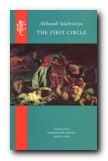
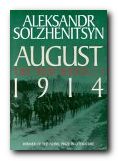 August 1914
August 1914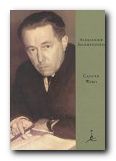 Lenin in Zurich
Lenin in Zurich
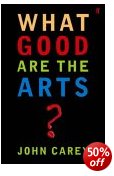
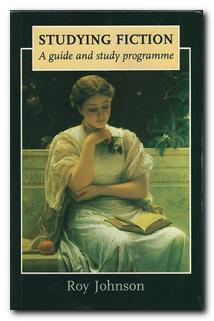 Studying Fiction is an introduction to the basic concepts and technical terms you need when making a study of stories and novels. It shows you how to understand literary analysis by explaining its elements one at a time, then showing them at work in short stories which are reproduced as part of the book. Topics covered include – setting, characters, story, point of view, symbolism, narrators, theme, construction, metaphors, irony, prose style, tone, close reading, and interpretation. The book also contains self-assessment exercises, so you can check your understanding of each topic. It was written by the same author as the guidance notes on this page that you are reading right now.
Studying Fiction is an introduction to the basic concepts and technical terms you need when making a study of stories and novels. It shows you how to understand literary analysis by explaining its elements one at a time, then showing them at work in short stories which are reproduced as part of the book. Topics covered include – setting, characters, story, point of view, symbolism, narrators, theme, construction, metaphors, irony, prose style, tone, close reading, and interpretation. The book also contains self-assessment exercises, so you can check your understanding of each topic. It was written by the same author as the guidance notes on this page that you are reading right now.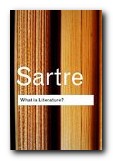
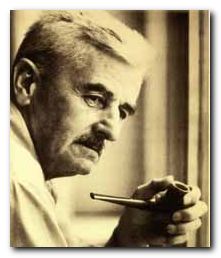 William Faulkner (1897—1962) grew up in Oxford, Mississippi, and lived there for the rest of his life – with only brief intermissions for travel and working in Hollywood as a screenwriter. He was one of the major American writers of the early twentieth century. He established the white protestant version of the American south, reflecting its values of that period – the collapse of the white land owning aristocracy and the inability (at that time) of the blacks to shake off the legacy of slavery. Faulkner was a literary experimentalist, influenced by the modernist period, and he sometimes makes extreme demands on his readers. He uses stream of consciousness, fragmented chronology, shifting point of view, and multiple narrative voices. Even in some of his plain narratives, the story is expressed in sentences which sometimes go on for two or three pages at a time.
William Faulkner (1897—1962) grew up in Oxford, Mississippi, and lived there for the rest of his life – with only brief intermissions for travel and working in Hollywood as a screenwriter. He was one of the major American writers of the early twentieth century. He established the white protestant version of the American south, reflecting its values of that period – the collapse of the white land owning aristocracy and the inability (at that time) of the blacks to shake off the legacy of slavery. Faulkner was a literary experimentalist, influenced by the modernist period, and he sometimes makes extreme demands on his readers. He uses stream of consciousness, fragmented chronology, shifting point of view, and multiple narrative voices. Even in some of his plain narratives, the story is expressed in sentences which sometimes go on for two or three pages at a time.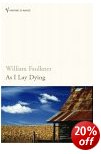 As I Lay Dying (1930) is a good point to start. It charts the journey of a poor family to bury their mother Addie Bundren in Jefferson. They make the coffin themselves and survive crossing the flooded Yoknapatwapha river, a fire, and other largely self-inflicted problems, to finally reach their goal. The novel is told in the rapidly intercut voices of the family members – including the dead mother. It is simultaneously funny, and tragic – a small scale epic which Faulkner wrote in the space of six weeks.
As I Lay Dying (1930) is a good point to start. It charts the journey of a poor family to bury their mother Addie Bundren in Jefferson. They make the coffin themselves and survive crossing the flooded Yoknapatwapha river, a fire, and other largely self-inflicted problems, to finally reach their goal. The novel is told in the rapidly intercut voices of the family members – including the dead mother. It is simultaneously funny, and tragic – a small scale epic which Faulkner wrote in the space of six weeks. The Sound and The Fury is generally regarded as his greatest work. It is a narrative tour de force in which Faulkner views the decline of the south through the point of view of four characters. The novel centres on the once-aristocratic Compson family, who appear in his other novels. The siblings Quentin and Caddy fall from a state of innocence and succumb to the family pattern of incest, erotomania, and suicide. One of their brothers is severely mentally handicapped. The first part of the novel is told entirely from his point of view – and of course he ‘sees’ the truth of much that is going on. The other narrator is the black servant who is powerless but ‘endures’. It is a work of astonishing brilliance, written in a sombre and lyrical mood.
The Sound and The Fury is generally regarded as his greatest work. It is a narrative tour de force in which Faulkner views the decline of the south through the point of view of four characters. The novel centres on the once-aristocratic Compson family, who appear in his other novels. The siblings Quentin and Caddy fall from a state of innocence and succumb to the family pattern of incest, erotomania, and suicide. One of their brothers is severely mentally handicapped. The first part of the novel is told entirely from his point of view – and of course he ‘sees’ the truth of much that is going on. The other narrator is the black servant who is powerless but ‘endures’. It is a work of astonishing brilliance, written in a sombre and lyrical mood.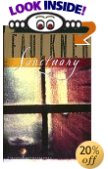 Sanctuary (1931) is an example of Faulkner writing simultaneously at his best and worst. The novel was produced to make money, and is a sort of rural South whodunit which centres on a particularly grizzly crime. All the southern Gothic elements are here. The main plot revolves around Temple Drake, a coquettish college girl who likes to secretly sneak out of her college dorm to attend dances. She takes one step too far onto the wild side, and the result is a helter-skelter ride down into the moral abyss. The novel also includes a psychopathic bootlegger, corrupt local officials, the trial of an innocent man, and a public lynching. It was Faulkner’s only best-seller.
Sanctuary (1931) is an example of Faulkner writing simultaneously at his best and worst. The novel was produced to make money, and is a sort of rural South whodunit which centres on a particularly grizzly crime. All the southern Gothic elements are here. The main plot revolves around Temple Drake, a coquettish college girl who likes to secretly sneak out of her college dorm to attend dances. She takes one step too far onto the wild side, and the result is a helter-skelter ride down into the moral abyss. The novel also includes a psychopathic bootlegger, corrupt local officials, the trial of an innocent man, and a public lynching. It was Faulkner’s only best-seller.